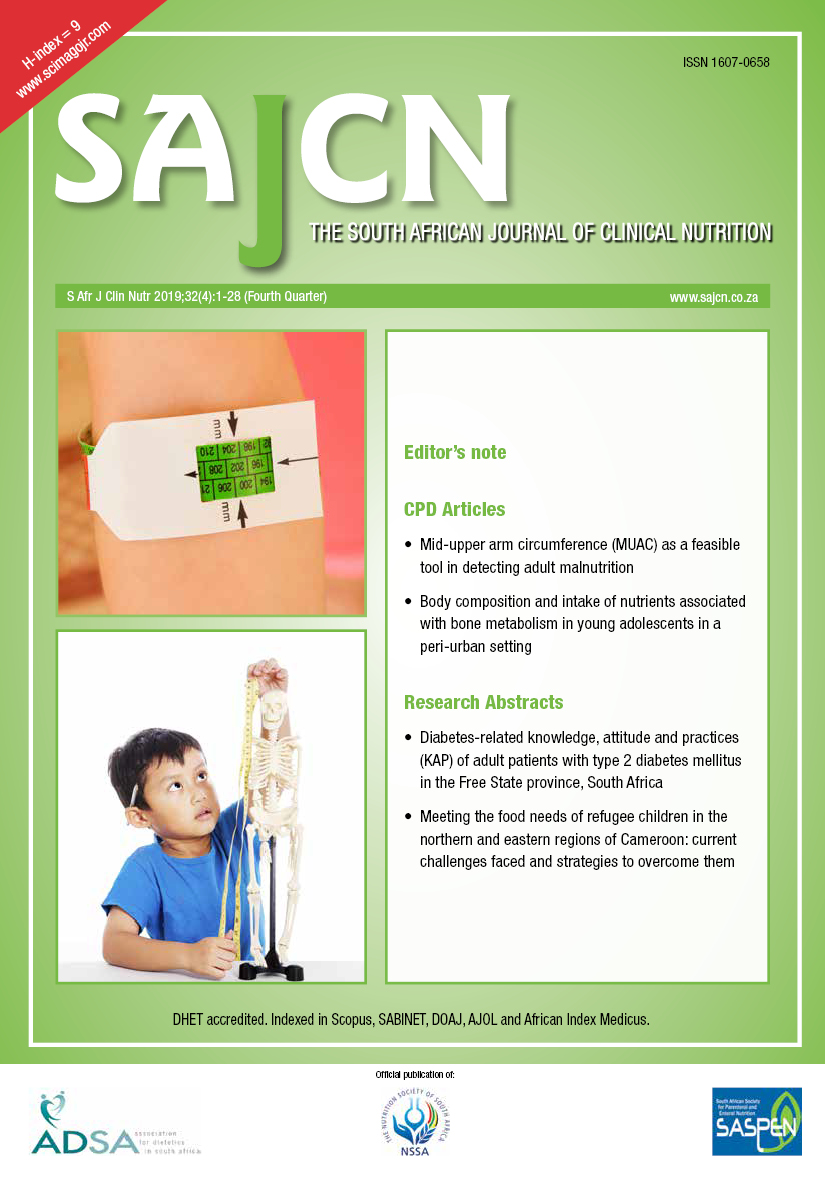Mid-upper arm circumference (MUAC) as a feasible tool in detecting adult malnutrition
Abstract
Objectives: This study aimed to expand on the limited South African malnutrition prevalence data and investigate the feasibility of mid-upper-arm circumference (MUAC) as a malnutrition screening tool.
Design: A cross-sectional, multi-centre, descriptive design was adopted.
Setting: The study was undertaken in three tertiary public hospitals in the same urban area within the Eastern Cape of South Africa.
Subjects: Adult hospitalised patients volunteered to participate (n = 266).
Methods: Data were collected using interviewer-administered questionnaires; obtaining anthropometric measurements; and consulting medical files. For maximum accuracy of various MUAC cut-off points, receiver operating characteristic curves were generated and area under the curve determined.
Results: Both body mass index (BMI) and MUAC identified 21% of participants as underweight or malnourished, and 39% as overweight or obese. The Malnutrition Universal Screening Tool (MUST) found 23% at increased malnutrition risk. Nurses or doctors detected and referred only 19% of underweight patients (BMI < 18.5 kg/m2), to dietetics services. Direct measurements of BMI and MUST were unobtainable in 38% and 43% of patients respectively, whilst MUAC was obtainable in 100%. A statistically significant relationship (p < 0.001) exists between MUAC, BMI and MUST to detect malnutrition or malnutrition risk. MUAC cut-offs for undernutrition were determined at < 23 cm (BMI < 16 kg/m2) and < 24 cm (BMI < 18.5 kg/m2), respectively, for the study’s population groups.
Conclusion: Malnutrition prevalence was high in this study, but often unidentified, with only a fifth referred to dietetic services. MUAC is a feasible method to identify adult malnutrition and should be considered as a malnutrition screening tool and key nutritional status indicator in South African public hospitals.
The full article is available at https://doi.org/10.1080/16070658.2018.1484622
The SAJCN does not hold itself responsible for statements made by the authors.


